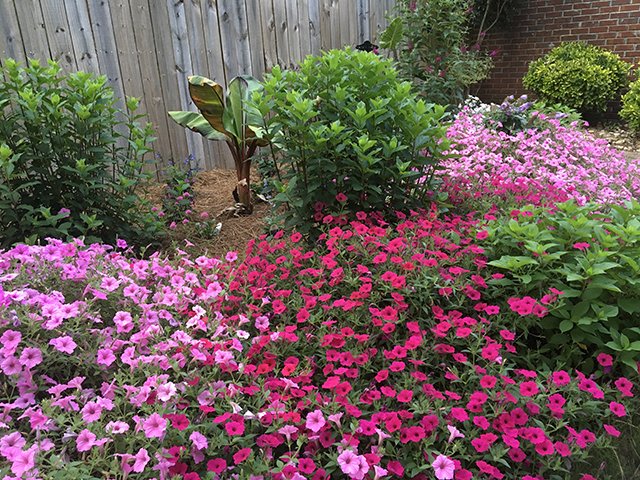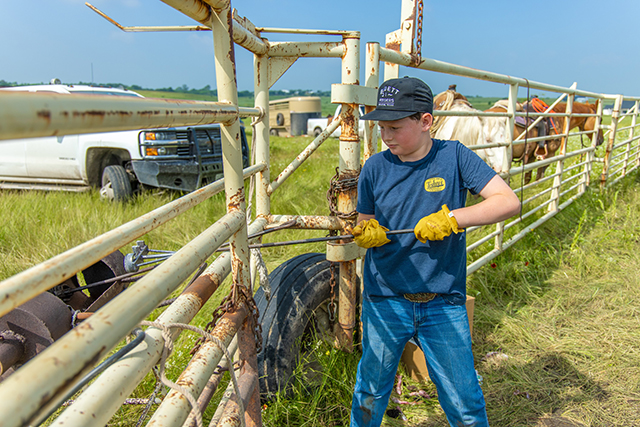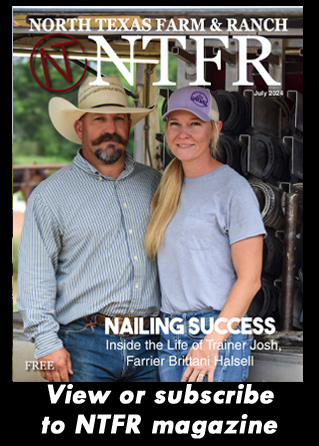Outdoor
Grazing North Texas

By Tony Dean, [email protected]
Illinois bundleflower is a premier native forb that can be found in all parts of Texas, although it is less prevalent in the extreme western area. It is one of the “Big Four” of highly desirable native forbs that also includes Maximilian sunflower, bush sunflower and Englemann’s daisy. All of these forbs can be found in North Texas.
This perennial legume grows from a branching woody taproot, with several erect stems one to three feet tall. The fern-like leaves are up to four inches long. Flowers are white to greenish powder-puff-like globes, from one-half to one-inch in diameter. Each plant produces 30 to 50 flowers.
The fruit is a tight cluster of flat, curved seed pods, each pod being three-fourths to one and one-quarter inches long and containing two to six beans. The seed pods are green when growing then turn brown at maturity, with the mature pods splitting to drop the seeds. The seeds may remain in the cluster for many months, thus extending the wildlife food value of the plant.
Illinois bundleflower is highly desired by all classes of livestock, thus it decreases in abundance on grazing lands that are heavily grazed. Crude protein of the leaves and stems can run 17 to 20 percent during much of the early and mid-growing season. It is an important indicator of range health.
To read more, pick up a copy of the February 2024 issue of NTFR magazine. To subscribe by mail, call 940-872-5922.
Outdoor
Grazing North Texas

By Tony Dean, [email protected]
We all take the sun for granted. If we’re building fence on a hot July day, we try to hide from it. If we are pulling a calf on a cold January morning, we welcome a few rays coming our way. Either way, it’s always there. We can’t live without the sun. We depend on it not only for our lives, but also for our livelihood as ranchers. As part of his gift to us, God gave the process of photosynthesis. This is how grasses grow.
Photosynthesis is the process plants use to sustain themselves. Plants gather water and nutrients from the soil and carbon dioxide from the atmosphere. Using the sun’s energy, the plant produces oxygen along with energy for growth in the form of sugar.
In managing cattle, the more we understand about the mothering instinct, and the herding instinct, the better job we do in livestock management. A big part of managing our grazing lands is understanding how plants respond to sunlight. Some plants want to maximize their exposure to it, and some prefer a more limited amount. Texas bluegrass has a wide range of sunlight adaptation. Texas bluegrass is a highly palatable native cool season perennial that can grow in open pasture or in shaded areas. When subjected to years of heavy grazing pressure, it decreases in open areas but can maintain a presence in shaded brushy areas not subject to heavy grazing. When we can incorporate well-planned rotation grazing into our management, Texas bluegrass can reappear in open pasture.
To read more, pick up a copy of the July issue of NTFR magazine. To subscribe by mail, call 940-872-5922.
Outdoor
The Garden Guy

By Norman Winter | Horticulturist, Author, Speaker
As a national garden writer, I can tell the trumpet call has gone out for the long summer ahead. This is a call for petunias, summer’s favorite flowers, and they are trumpet shaped, of course. This call is also one of panic as I hear it in the voices of gardeners saying, “I can’t find my bubblegums.”
This means they can’t find their Supertunia Vista Bubblegum petunias. There is little doubt this is the most awarded petunia of all time. You can count them, 296 awards filling 10 pages. Bubblegums and all of the Supertunias, are among the most awarded flowers available to gardeners. By awards I’m referring to rigorous university trials in both the United States and Canada.
You want to get them planted now while the temperatures are mild over much of the country and acclimation is nice and easy. Even in the south it is a great time to plant before triple digit heat indexes are the norm. Planting now will give you the longest time to enjoy a Supertunia Summer Celebration. You want to plant now because everyone is ready for season color and shopping at the local garden center is among the stiffest competition. Hence the panic over Bubblegums.
To read more, pick up a copy of the July issue of NTFR magazine. To subscribe by mail, call 940-872-5922.
Outdoor
Parting Shot: Big Shoes to Fill

By Jelly Cocanougher
It starts with absorbing how to drive on old ranch roads. The beat-up pickup that has run a million miles and is somehow still hanging on – almost always with some quirks to it. I remember holding a passenger truck door closed with a rope, checking on pastures. I remember being at a farm auction baffling a half a dozen men starting a raggedy old feed truck with a scrawny wire you had to jiggle. Feet dangling trying to reach the pedals of a sketchy old truck, navigating the dirt roads with a cold Dr. Pepper and chocolate bar.
You inherit your grand daddy’s oversized gloves that are way too big to avoid pinching your fingers. From observing and acquiring the wisdom from delivering babies, mending fences, checking out water gaps, to doctoring and holding the iron that holds your generational brand. Raising the next generation right – in the dirt and absorbing how the world works.
-

 Country Lifestyles1 year ago
Country Lifestyles1 year agoScott & Stacey Schumacher: A Growth Mindset
-

 Country Lifestyles7 years ago
Country Lifestyles7 years agoStyle Your Profile – What your style cowboy hat says about you and new trends in 2017
-

 Equine10 months ago
Equine10 months agoThe Will to Win
-

 HOME7 years ago
HOME7 years agoGrazing North Texas – Wilman Lovegrass
-

 Country Lifestyles4 years ago
Country Lifestyles4 years agoAmber Crawford, Breakaway Roper
-

 Outdoor9 years ago
Outdoor9 years agoButtercup or Primrose?
-

 Country Lifestyles8 years ago
Country Lifestyles8 years agoDecember 2016 Profile, Rusty Riddle – The Riddle Way
-

 Country Lifestyles8 years ago
Country Lifestyles8 years agoJune 2016 Profile – The man behind the mic: Bob Tallman






